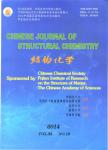3D-QSAR and Docking Studies of 1,3,4-Thiazolidinone Derivatives Using R-Group Search and Surflex-dock
3D-QSAR and Docking Studies of 1,3,4-Thiazolidinone Derivatives Using R-Group Search and Surflex-dock作者机构:College of Chemistry and Chemical EngineeringShaanxi University of Science and Technology Shaanxi Key Laboratory of Chemical Additives for Industry
出 版 物:《Chinese Journal of Structural Chemistry》 (结构化学(英文))
年 卷 期:2019年第38卷第3期
页 面:464-475页
核心收录:
学科分类:0817[工学-化学工程与技术] 08[工学]
基 金:supported by the National Natural Science Foundation of China(21475081,21275094) the Graduate Innovation Fund of Shaanxi University of Science and Technology
主 题:QSAR RT inhibitors Topomer CoMFA Topomer search design of new inhibitors molecular docking
摘 要:In this paper, a three-dimensional quantitative structure-activity relationships(3 D-QSAR) study for 20 HIV-1 reverse transcriptase(RT) inhibitors was established using Topomer Co MFA. The models were built based on different fragment cutting models, with the most effective model of the multiple correlation coefficients of fitting(r^2) to be 0.920, cross-validation(q^2) of 0.575, and external validation(Q_(ext)~2) being 0.701. The results indicated that the model obtained has both favorable estimation stability and good prediction capability. Topomer Search was used to search R-group from ZINC database. As a result, a series of R-groups with relatively high activity contribution was obtained. By No. 6 molecule filtering, 3 R_1 and 15 R_2 groups were selected, and employed to alternately substitute for the R_1 and R_2 of sample 6. Finally, 45 new compounds were designed, and the Topomer CoMFA model was used to predicate the biological activity, so the Topomer Search is effective in screening and can guide the design of new HIV/AIDS drugs. The molecular docking method was also used to study the interactions of these drugs by docking the ligands into HIV-1 RT active site, which revealed the likely bioactive conformations. This study showed that there are extensive interactions between the 1,3,4-thiazolidinone revertase inhibitors and His84, Asp145, Lys33 and Leu83 residues in the active site of HIV-1 RT. These results provide useful insights for the design of potent new inhibitors of RT.



